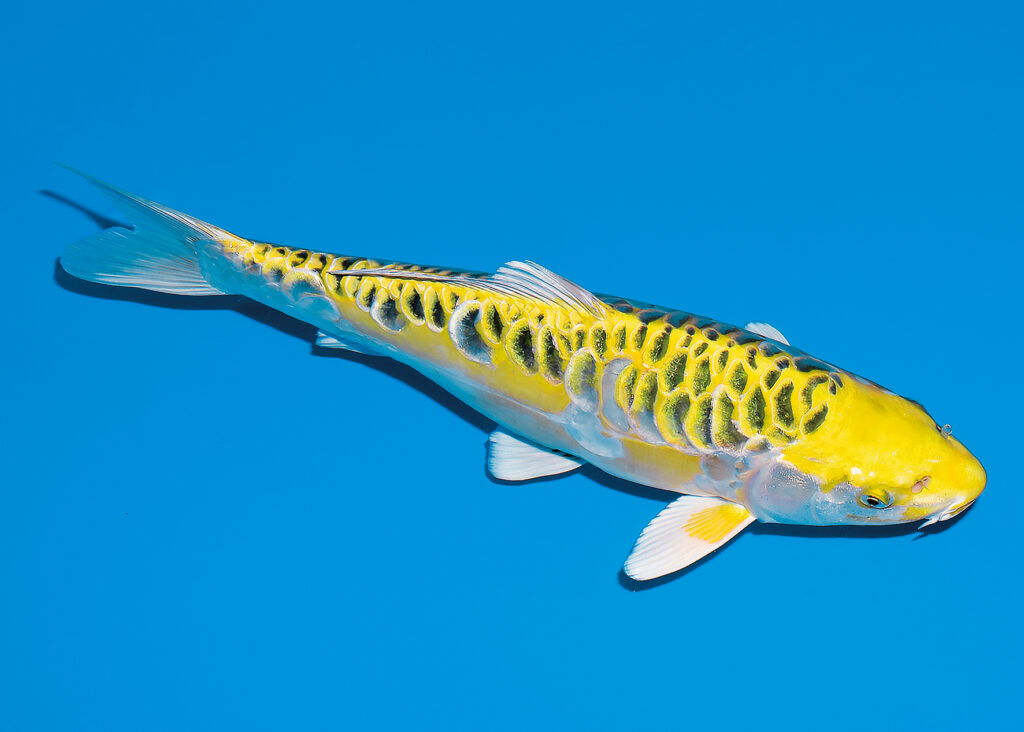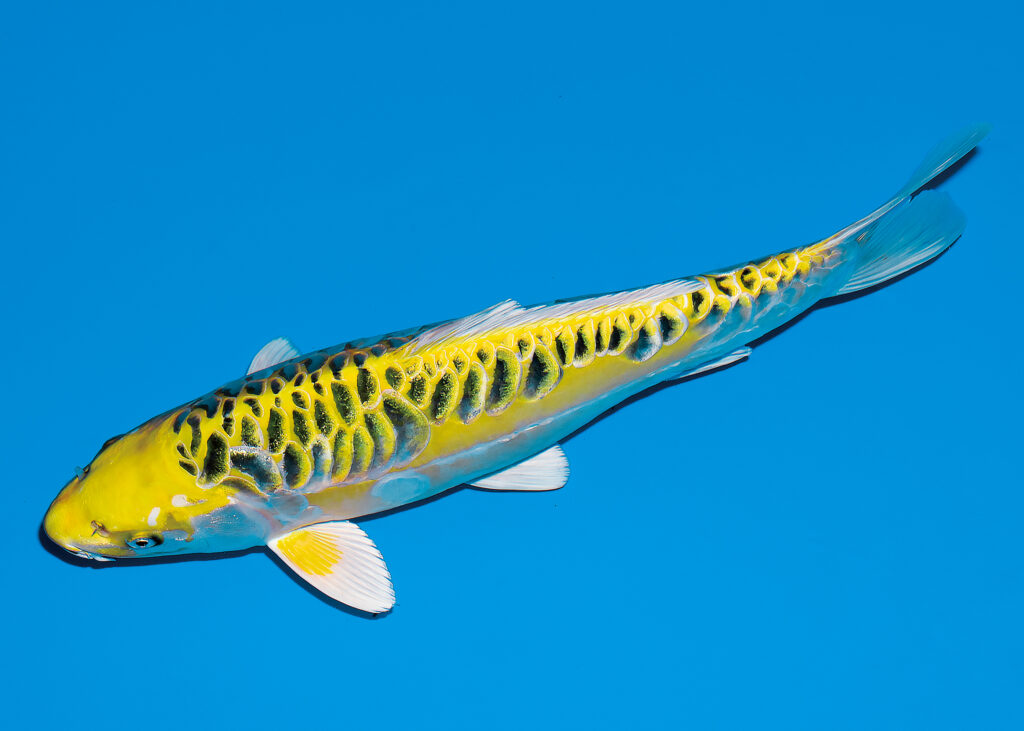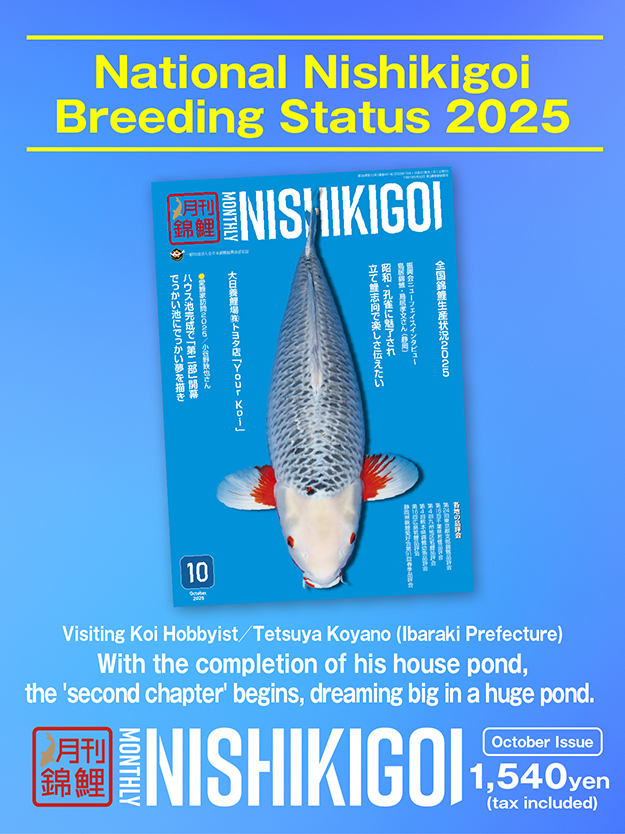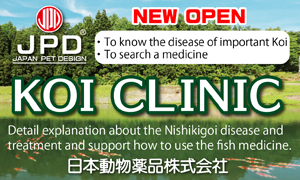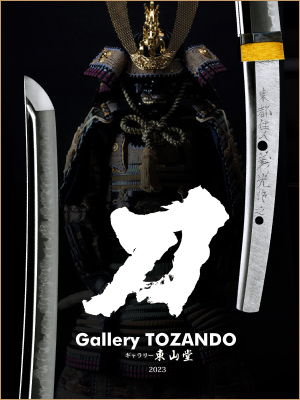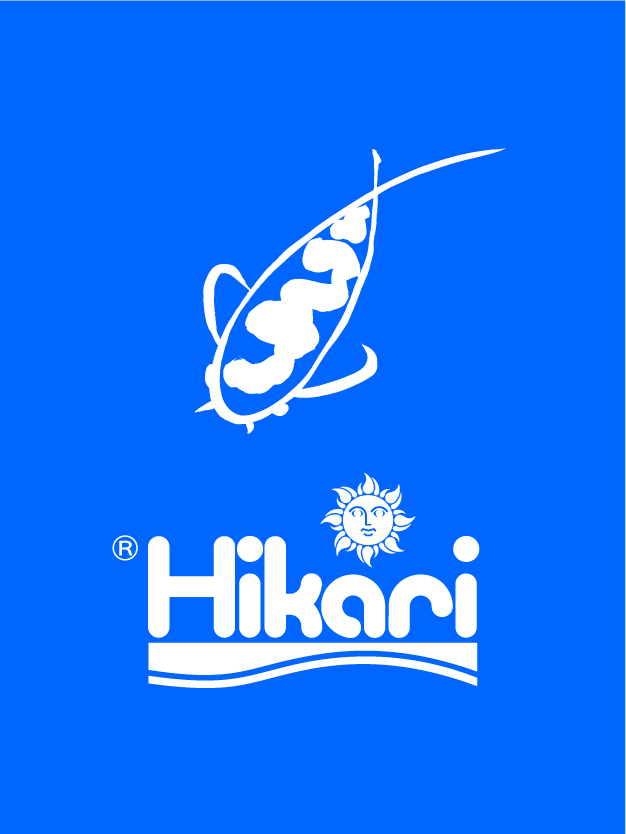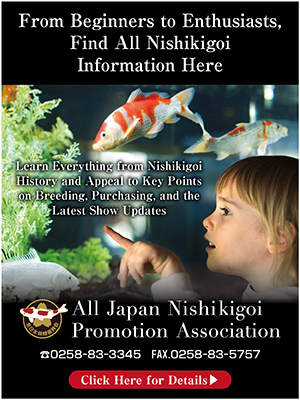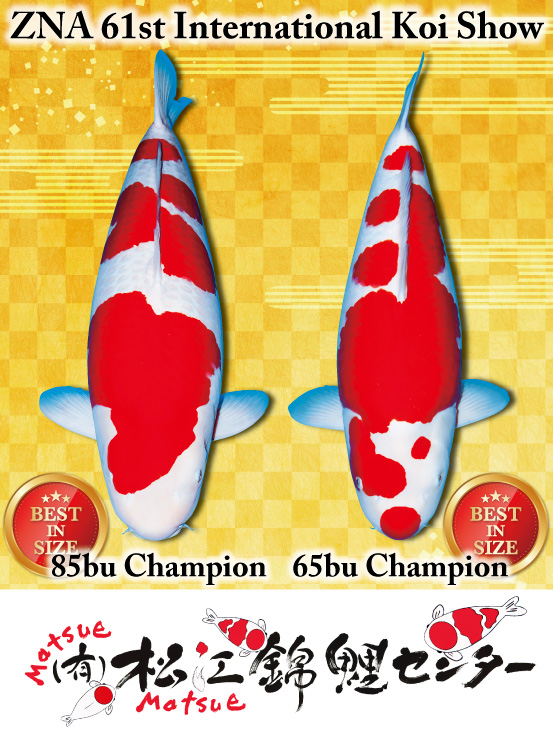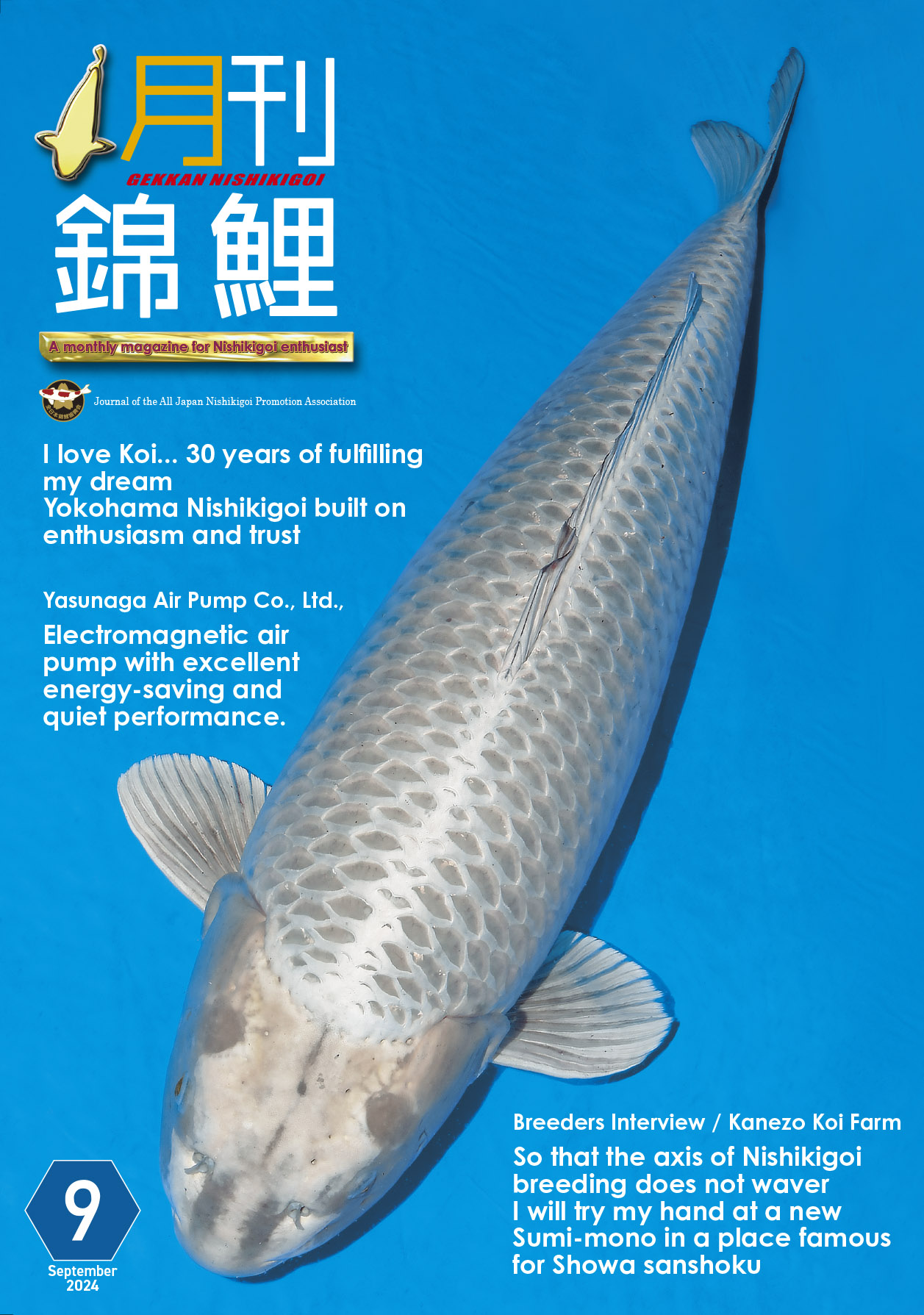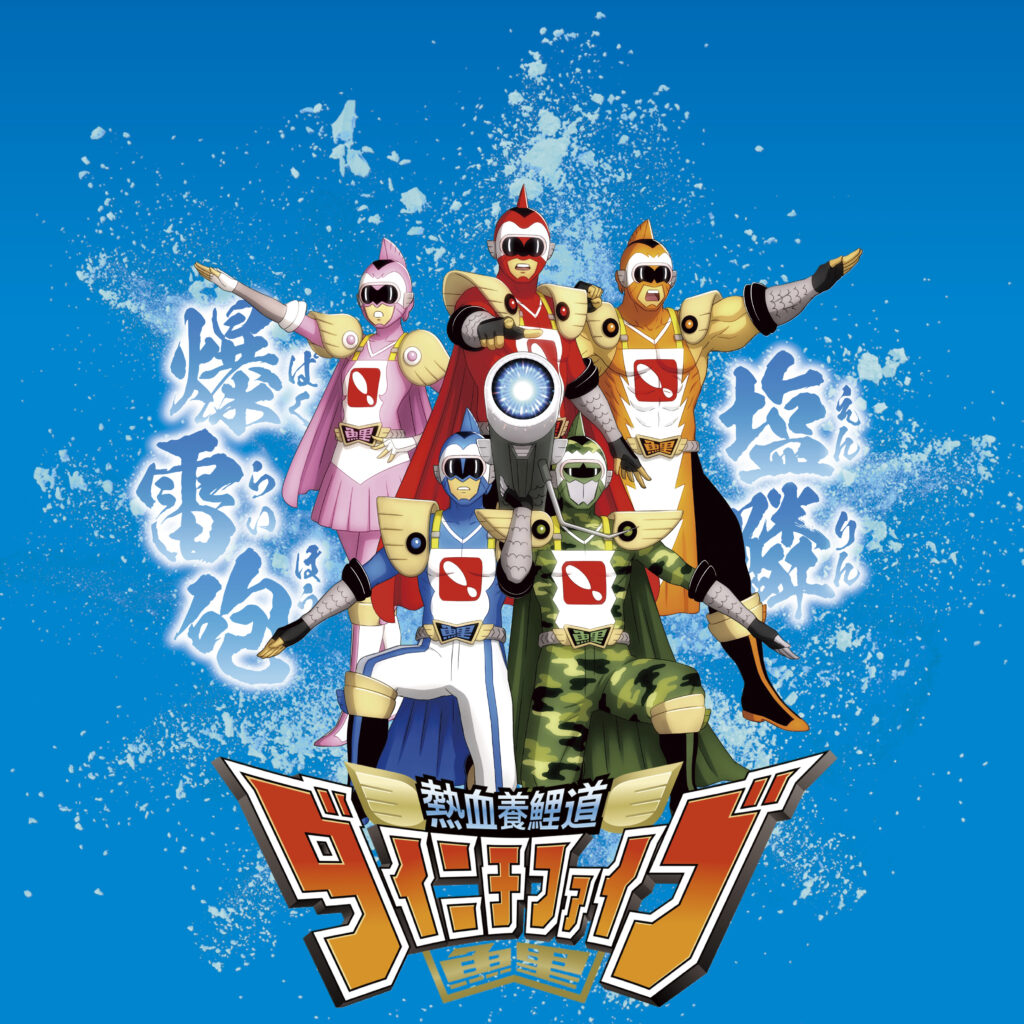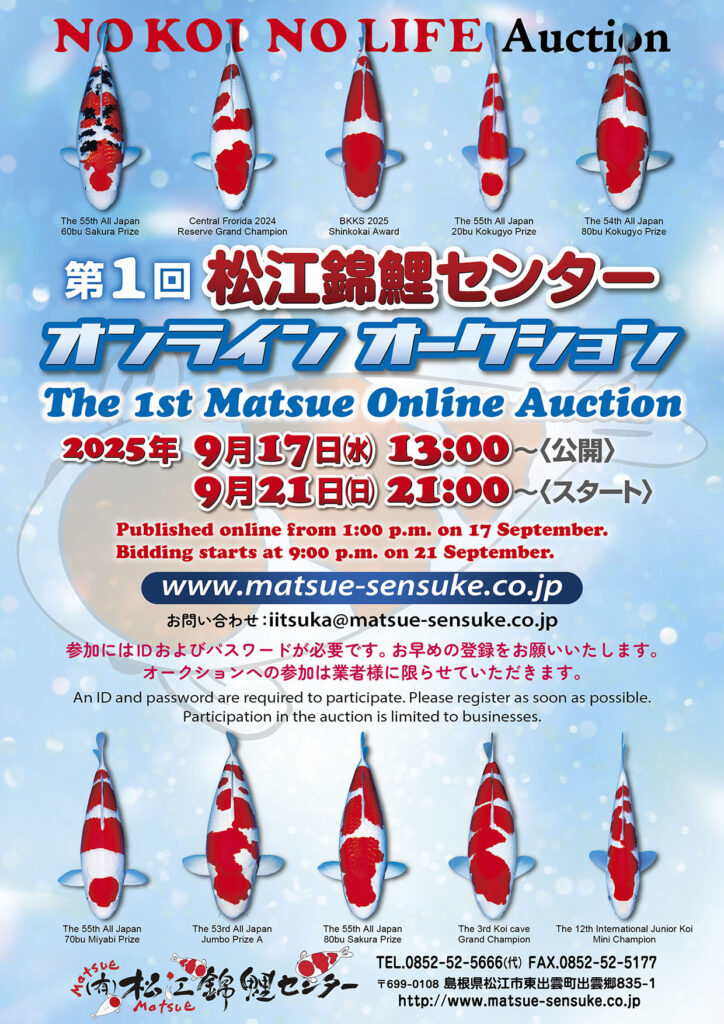— Compared to typical scales, does aragoke have difficulty in displaying silver?
Ikarashi: Silver typically adheres well to the back but struggles to stick to the scales on the shoulder. I wanted to put ginrin there, so I searched for parent Koi that could carry silver well and found several. I focused primarily on the body and silver, introducing ginrin from Karashi and Ochiba bloodline.
— So, does Godzilla’s parent belong to the Karasshi and Ochiba lineage, then?
Ikarashi: The Karashi bloodline ginrin can only be produced for one year, and in the second year, only the Ochiba bloodline can be. Therefore, the first generation Godzilla crossed the Ochiba bloodline ginrin with DoitsuKarashi from my stock.
— So, by crossing the Ochiba and Karashi lineages, you can create jet-black koi, right?
Ikarashi: While Karashigoi is generally perceived as yellow, the term ‘yellow’ is slightly different. It has a base colour resembling a greyish, like Soragoi, which overlaps to create a deep mustard colour. So, when using mustard koi to create something, a lot of black koi are produced.
— I see.
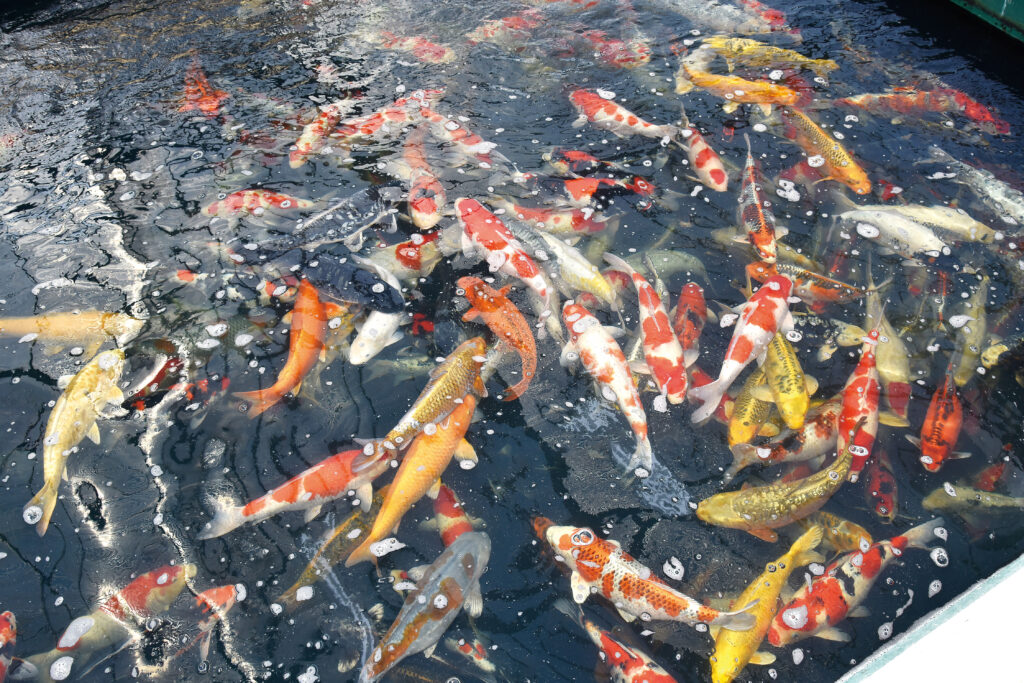
Ikarashi: I combine various elements to create koi and breed parents, and through this process, the characteristics of the varieties become apparent. Over time, I have understood what happens when different varieties are crossed.
— What was the customer response when “Godzilla” was introduced to the market?
Ikarashi: The size, arrangement, and distribution of the scales of aragoke are typically what people understand when we say “Godzilla”. It was the first shown in the koi auction in Niigata in the autumn of 2019(the photo is 30p, right). This koi had a well-balanced aragoke pattern and a strong impact, so customer feedback was incredibly positive.
— When silver was added, even Mujimono looked flashy, didn’t they? Is it indispensable to put ginrin to make Aragokegoi?
Ikarashi: You’re right. Without ginrin, it’s definitely harder to sell them.
Moreover, when silver is added to the DoitsuYamabuki, it shines by itself, so when light hits it, ginrin stands out. However, the silver is entirely imperceptible even if there is ginrin, without other colours by itself. On the contrary, it doesn’t look beautiful because the boundary with the scales is hard to see. The reason why aragoke is considered not beautiful is scales disrupt the pattern, and It’s because the scales themselves lack individual charm or flashiness. Aoki’s Kouryu stands out because it has black scales on a yellow background. Even if a similar aragoke colour were incorporated into a yellow background, it probably wouldn’t stand out as much.

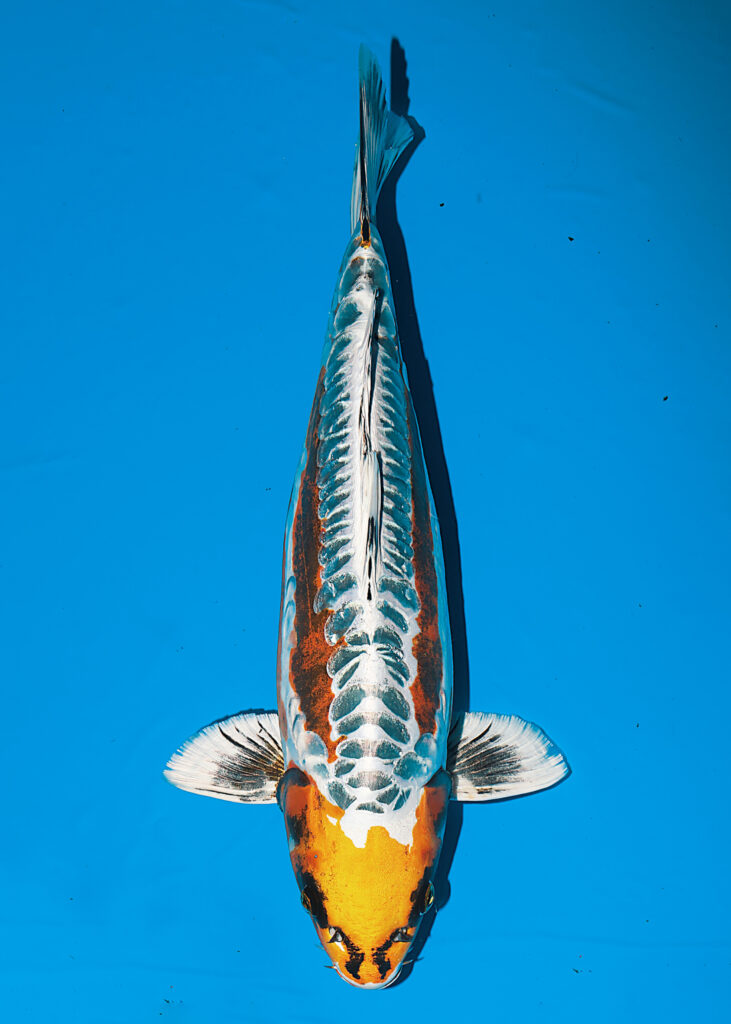
The yellow-based Aragoke koi is bred by Ikarashi Koi Farm and is known as ‘Kouryu’.
Interview with Toshinobu Ikarashi from Ikarashi koi farm
Kawarigoi brings a multifaceted perspective.
— How do you feel about the evaluation Kouryu nicknamed King Gidorah (Photo on 9 pages) by AO Aokiya Co., Ltd. won at the 53rd All Japan Combined Nishikigoi Show this year?
Ikarashi: Perhaps the perspective has shifted, or all possible pattern-focused Nishikigoi already have been created. For instance, koi, which has a heart within the pattern and may seem like unique koi, fetches high prices at auctions and is highly valued, but I am not sure.
— Are perspectives on Kawarigoi also changing as the various Kawarigoi are being created?
Ikarashi: Indeed, that koi has a yellow body, and aragoke appears blackish, creating a clear contrast. Even the scales are evenly aligned to some extent, beautifully on both sides. I think an outcome like this is really positive, but if we standardize it like a manual in the future, it might not be exciting. If breeders or dealers have some fixed concepts, it limits the possibilities for new ideas. Instead of viewing things as ‘this is good, and everything else is bad, I think it’s better to appreciate the beauty in various approaches.

